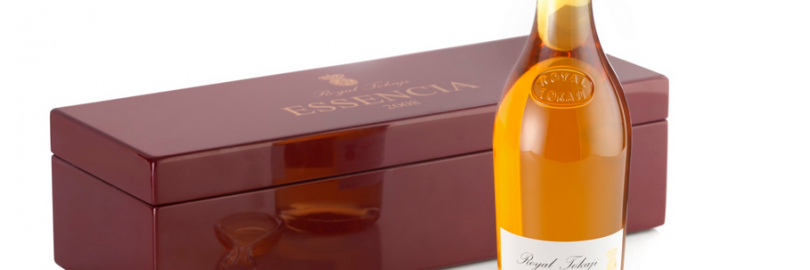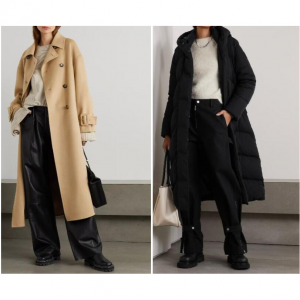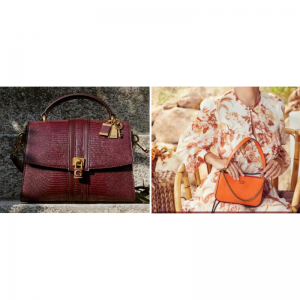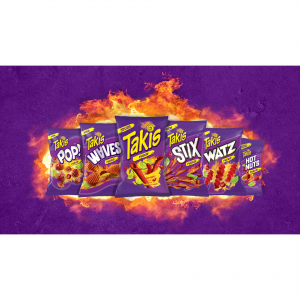
10 Sweetest Wines in the World, Ranked 2024
Money Saving Tip First:
Whether you want to have an aperitif or enjoy with foie gras, melon, roasted poultry, blue cheese, you can find a sweet wine that suits you best. Don’t forget to Sign up at Extrabux before shopping online, (What is Extrabux?), then you can earn up to 45+% cashback on your purchase!
Sign-Up Bonus: Join for FREE & Earn $20 Welcome Bonus today! Then earn $5 Friend Referral Bonus!
There are many good places to buy wine, such as Drizly(3% Cash Back), Wine.com(5% Cash Back),Saucey(4% Cash Back),Vivino(5% Cash Back),Wine Enthusiast(3% Cash Back).
1. Tokaji Essencia
Sweetness Level: 450-900 g/L residual sugar
ABV: 2-6%
Country: Hungary
Main grape variety: Furmint
($899.99, Get Up To 5% Cash Back with Wine.com)

The name ‘Tokaji’ simply means wine from the Tokay region. Tokaji wine is one of the oldest and most famous Hungarian wines.
The best-known Tokaji wine style is certainly Tokaji Aszú, a style of dessert wine made from botrytized grapes. This is the primary sweet style of Tokaji, and is produced from grapes that have been affected by noble rot. Grapes that have been affected in this way have very high sugar concentration, and thus the wines have a lot of residual sugar after fermentation. Tokaji Aszú must have a minimum of 120 grams per liter (g/L) of residual sugar.
The style that is sweeter than Tokaji Aszú is Tokaji Eszencia. Essencia is produced from the free-run juice of the aszú berries used to produce Tokaji Aszú.
The botrytised aszú grapes, which have been hand selected in the vineyards over numerous harvests, are piled into vats in the winery. As the number of berries in the vats grows over the weeks, their increasing weight presses down on the berries at the bottom, squeezing out their sugary juice. This free-run juice is collected either via a hole at the bottom of the vat or though a tap. This essence of grape—hence its name Essencia, or Eszencia in Hungarian—contains an incredible amount of sugar.
This juice is then fermented for years in glass carboys or small wooden barrels. Today, many Tokaji are aged for 3 to 5 years, but the best varieties can easily withstand 50 to 100 years—in the case of Eszencia, up to 200 years!
The sugary environment means it takes a while for the yeasts to get to work, very slowly, and they are rarely able to produce more than five to six percent of alcohol before they die, more usually two to four. This leaves enormous amounts of residual sugar per liter, sometimes even up to record-breaking figures of 900 grams! Today, The Essencia’s residual sugar content is at least 450 g/l.
Tokaji Essencia is the most valuable and rarest type among the Tokaj wines. One keg containing 25 kilograms of dry berries produces only between 1 and 1.5 liters of Essencia. It is also added to Aszú wines for ennobling them.
Tokaji Essencia is a wine so rich and concentrated that it’s more likely to be served in a spoon than in a glass. In fact, some wineries even go as far as to sell a crystal spoon along with their Essencia.Because of its enormous sugar content, it usually has a syrup-like texture.
Eszencia is likened to liquid caramel, with hints of flowers, honey, prunes, quince, black tea, and molasses. Drinkers enjoy the thick syrup in tablespoons, a maneuver that only seems conservative when forgetting that Eszencia is four times sweeter than Coke.
But is it even wine? Essencia's alcohol level is very low, the alcohol content is usually between 2% and 6%, so it is not a real wine in the conventional sense, but rather a unique elixir, the quintessence of the grape, with an almost supernatural concentration of taste and aroma.
It's something that every wine aficionado dreams of tasting at least once, and to do so is likely to be a life-enhancing and never-forgotten experience. It is the sweetest, most concentrated, richest, most luscious wine you’ll ever taste.
2. Pedro Ximénez
Sweetness Level: 212-500 g/L residual sugar
ABV: 2-6%
Country: Spain
Main grape variety: Pedro Ximénez
($22.99, Get Up To 5% Cash Back with Wine.com)

Pedro Ximénez is a white grape variety. It is mainly grown in the Jerez, Montilla-Moriles and Malaga regions of Spain.
Among
them, the Montilla-Moriles region has the largest planting vineyard,
but the Pedro Ximénez produced here is mainly sold to fortified wine
producers in Jerez and Málaga.
The wine producers in Jerez mainly
sell sherry, but the most important grape variety in this area is
Palomino Fino, which accounts for almost the entirety of the vineyards.
Therefore,
producers use Pedro Ximénez wines purchased from Montilla-Moriles to to
sweeten Palomino-based blends, sometimes alongside the Muscat of
Alexandria grape.
In addition, Jerez producers can also bottle imported Pedro Ximénez wine as a single-variety sherry, usually labeled "PX".
Pedro
Ximénez wine is a sweet dessert wine, made from raisins. Like other
sherries, it is made fortified with alcohol after fermenting, and before
being aged using the traditional solera process.
Pedro Ximénez
Sherry is the sweetest and darkest of all Jerez wines. High-quality
examples of Pedro Ximénez Sherry are some of the finest dessert wines in
the world, and aged examples from top producers can routinely fetch
hundreds or thousands of dollars.
The amount of sugar in Pedro
Ximénez wines is at least 212 g/l, but it will typically be between 300
and 400 grams of sugar per liter. PX Sherry even can have as much as 500
grams per liter of residual sugar, capable of exceeding even the
sweetest Tokaji Escenzia wines. They are deep brown in color and highly
aromatic, with notes of coffee, licorice and dried fruits.
Young
Pedro Ximénez can be a liquid bonbon, full of sticky sweetness,
excellent with pure chocolate desserts, crepes or spicy cheese. It can
also be used as a sauce over vanilla ice cream. They should be chilled
to 10°C to balance the sweetness. The older examples are perfect with
more delicate desserts, paté or blue cheese.
3. Rutherglen Muscat
Sweetness Level: 180-400 g/L residual sugar
ABV: 17.5%
Country: Australia
Main grape variety: Muscat
($21.99, Get Up To 5% Cash Back with Wine.com)

Rutherglen is an historic wine region in northeast Victoria, Australia, famous for its fortified Topaque and Muscat with complex tawny characteristics.
While most traditional fortified wines hail from the Old World, Rutherglen Muscat is a gem of the New World. There are more than 200 varieties in the muscat family, but only one is used to make Rutherglen Muscat - the high quality Muscat a Petits Grains Rouge (muscat with little red berries). The local winemakers refer to it simply as Rutherglen Brown Muscat.
The Muscats of Rutherglen are considered the "World’s Richest Wines" and bear a mark of authenticity – an oval logotype with a stylised "R" – which is only applied to the wines drawn from the great Muscat vineyards of the region. Rutherglen wines boast great concentration and fine aromas hinting at orange flowers and spice, and are capable of astounding quality.
Rutherglen Muscat is renowned for its intensity, complexity and rich raisin and chocolate flavours. To make great Muscat, the grapes must be very ripe. Rutherglen enjoys a particular advantage in this regard, with the climate perfectly suited to the task of ripening muscat.
The period around vintage (March, April, May) is renowned for being mild, sunny and stable in and around Rutherglen; often referred to as an 'Indian Summer'. This allows the muscat fruit an extra period of 'hangtime' on the vine, resulting in the impossibly high baumes(measurement of natural fruit sugars) required for Rutherglen Muscat.
Then, the Muscat juice is fortified with a 96% abv spirit to make a very sweet wine of around 17.5% abv. Old barrels are used to promote oxidative aging, which produces nutty, savory, caramelized notes. Additionally, as water evaporates, the wines develop a luscious, viscous texture.
Finally, this is super complex stuff and residual sugar is usually in excess of 328 grams, but the high acid leaves a beautifully complex dessert wine that will keep you coming back for more!
Rutherglen Muscat is typically a nonvintage wine, and some producers, like Campbells, use a solera system to age their wines.
The longer a Rutherglen Muscat ages in these barrels, the richer and more complex it becomes. There are four classifications:
Rutherglen Muscat, which averages 3-5 years of aging. Residual sweetness 180-240 grams per litre.
Classic Rutherglen, which ages from 6-10 years. Residual sweetness 200-280 grams per litre.
Grand Rutherglen, which averages 11–19 years. Residual sweetness 270-400 grams per litre.
Rare Rutherglen, with a minimum age of 20 years. Residual sweetness 270-400 grams per litre.
Rare Rutherglen Muscats are only bottled in tiny quantities each year, but for those privileged to taste them, these are wines of breathtaking complexity, texture and depth of flavour. Few wines can elicit a response on first tasting quite like Rutherglen Muscat. The multitude of aromas, the incredible depth of flavour on the palate, and a finish that seems to linger for an age... the first sip of Rutherglen Muscat is a memory that stays with a wine lover for life.
4. Sélection des Grains Nobles
Sweetness Level: 276-306 g/L residual sugar
ABV: 10%
Country: French
Main grape variety: Gewurztraminer
($42, Get Up To 5% Cash Back with Vivino )

Alsace
is probably the most renowned French wine region in the world for white
wines. The Alsace wine-growing region boasts a semi-continental climate
with very little rain and remarkable sunshine during the autumn which
is notably favourable for extended ripening of grapes as well as the
development of noble rot.
It’s also ideal for later harvesting of grape varieties such as Riesling, Muscat, Pinot Gris or Gewurztraminer d’Alsace, often several weeks after the normal harvest time when the berries are ultimately at their best.
The
wines brewed from these varieties can be roughly divided into three
categories: ordinary, high-quality, and late harvest. Among them,
late-harvest wines are made from grapes infected with noble rot fungi.
Generally, there are two types: VT (Vendage Tardives) and SGN (Selection
des Grains Nobles).
SGN are sweeter than VT. SGN are made much in the same way as VT but are made with grapes affected by noble rot and must have a higher potential alcohol and sugar level at harvest.
Gewurztraminer is the most common variety used
for VT and SGN wines, as it readily achieves high sugar levels; these
are harder to attain with Riesling and Pinot gris, but with greater
acidity to balance the sweetness, such wines can be very long-lived.
Finally, Sélection de Grains Nobles is the highest classification level for sweet wines made from botrytized grapes in Alsace. The SGN designation can be used in the appellations Coteaux du Layon and Coteaux de l'Aubance and in both cases this requires the grape must used for the wine to have a minimum sugar content of 276 grams per liter.
So, SGN wines are rarer, with minimum sugar levels stipulated at 276 grams per litre for Riesling and 306 grams per litre for Gewürztraminer and Pinot Gris.
In addition, SGN is roughly equivalent to
the German Beerenauslese. On rare occasions, the designation
Quintessence de Grains Nobles (QGN) is seen for wines that significantly
exceed the minimum requirements for SGN wines. Unlike the German
designation Trockenbeerenauslese (TBA), QGN is no official designation,
but it could be thought of as the Alsatian equivalent of a high-grade
TBA.
The magic of the Sélection de Grains
Nobles offers an exceptional wine with sweet intense yellow hues. Mouth
in concentration, creaminess and the unmistakable fruity recalling figs
and candied fruit, transport you to a magical world ... the quintessence
of Alsace.
5. Trockenbeerenauslese
Sweetness Level: 150-300 g/L residual sugar
ABV: 2-6%
Country: German
Main grape variety: Riesling
(Get Up To 3% Cash Back with Drizly )

Trockenbeerenauslese (literal meaning: "dry berry select harvest") is a German language wine term for a medium to full body dessert wine.
Trockenbeerenauslese wines, often called "TBA" for short, are made from individually selected grapes affected by noble rot. These grapes have the highest sugar levels with flavours concentrated further by noble rot.
Therefore, Trockenbeerenauslese is the highest in sugar content in the Prädikatswein category of the Austrian and German wine classifications.
The most typical of the grape varieties made into Trockenbeerenauslese is the Riesling grape, because it maintains sufficient acidity even at extreme maturity. Although TBA has very high residual sugar level, the finest specimens are far from being cloying due to high level of acidity.
In Germany it is common to add a golden capsule to indicate a superior wine. The sweetness of a TBA that just comes up to the minimum requirements may be 150 grams per liter, but in exceptional circumstances, the wines may contain more than 300 grams of sugar per liter and may approach the very rare Tokaji Eszencia in concentration.
These wines are rare and expensive. Some of the best wines of this type are sold almost exclusively at the various German wine auctions. They are usually golden to deep golden in colour, sometimes even dark caramel. The body is viscous, very thick and concentrated, and arguably can be aged almost indefinitely due to the preservative powers of its high sugar content.
Trockenbeerenauslese Sweet Riesling is amazing with caramel, apple, peaches and cream, sweet desserts and pies. Let's have a try!
6. Tokaji Aszú
Sweetness Level: 120-300 g/L residual sugar
ABV: 2-6%
Country: Hungary
Main grape variety: Furmint
($40.44, Get Up To 5% Cash Back with Vivino )

Hungary’s Tokaji Aszú is one of the few internationally famous sweet wines. The royal families of Europe named it “Vinum Regum, Rex Vinorum” (Wine of Kings, King of Wines), and one style of Tokaji Aszú—Esszencia—is proudly mentioned in the Hungarian national hymn.
Aszú is the Hungarian word for shrivelled and botrytis-affected berries, and the resulting wine they make.
The Aszú grapes must be harvested laboriously one-by-one, these grapes are full in flavours and sweetness.
The Aszú berries were collected in large baskets called puttony and added in measured amounts to barrels of non-botrytis grape must. Then, the wines were produced and labeled based on how many Aszú baskets were added to the must.
Thus, the system of labeling wines with 3–6 puttonyos was developed. A Tokaji made entirely from Aszú grapes is not labeled using the puttonyos system but is known as Eszencia. (The incredibly rare Tokaji Essencia, made from the syrupy free-run juice that trickles from pressed Aszú berries, usually contains more than 450g/L of residual sugar and is fermented in glass demijohns.)
However, today the classification is based on residual sugar. From the 2013 harvest the new regulation requires minimum 120 g/l residual sugar in every Aszú wine.
The producer still may use the puttonyos number on the label. But the "three" and "four" Puttonyos categories are no longer valid. Today, all Aszú must be the equivalent of at least five Puttonyos, measured as 120g/L of residual sugar, whilst six Puttonyos must reach at least 150g/L. The best examples may exceed 300 g/L residual sugar, but are still balanced because retain distinct natural acidity.
This may sound very sweet, but Aszú wines are incredibly well-balanced with vibrant acidity. A classic Tokaji Aszú is deep amber with high acidity, luscious mouthfeel, and intense aromas and flavors of orange marmalade, apricots, almonds, and honey. They may develop further rye bread, smoke, coffee and caramel aromas.
7. Muscat de Lunel
Sweetness Level: 252 g/L residual sugar
ABV: 15-18%
Country: French
Main grape variety: Muscat
(Get Up To 3% Cash Back with Drizly )

Muscat de Lunel is a sweet white Vin Doux Naturel. This sweet Muscat wine is produced in the municipalities of Lunel , Lunel-Viel , Vérargues and Saturargues in France.
As the name suggests, these wines are made
from one of the many varieties of Muscat grapes – in this case, Muscat
Blanc à Petits Grains. This sort of Muscat is capable of producing wines
with real finesse and a particularly pure, floral sort of grapiness.
The
Muscat de Lunel since 1943 has its own Appellation d'Origine Contrôlée
(AOC shortly), for which only the muscatel - Rebsorte Muscat blanc à
petits grains is approved. The wine already had an excellent reputation
at the beginning of the 17th century and was later served at the court
of Versailles under King Louis XIV .
The Muscat Blanc à Petits Grains grape is pretty much universally considered to be not merely the easy champion of the entire Muscat family, but one of the dozen and a half or so of world-class white-wine grapes. Muscat Blanc à Petits Grains is said to be almost the only grape whose wine actually smells and tastes like grapes.
The vineyards cover 340 hectares of vines on clay soils that are rich in iron oxide and thus red in colour. They cover the four communes of Lunel, Lunel-Viel (with the Clos du Mazet, Clos Bousquet, Clos du Capitaine Coste and Clos Reynaud sites considered the best), Vérargues and Saturargues in the Hérault department.
The grapes must reach a sugar level of 252 grams per liter. Wine alcohol is added to the grape must in a ratio between 10:1 and 20:1. The final alcohol must be 15 to 18 percent by volume.
They can be as haunting as any port.
Lunel Muscat is generally a strong, heady and spirituous but suave wine, calibrated by its freshness and lighter citrus and white flower aromas which offer an ample and lengthy finish.
The sea-borne freshness that
bathes the fruits allows for the delicate Muscat Blanc, the only grape
that can be used under this AOC designation, to fare well in the intense
Mediterranean summer heat. With such characteristics, the dense and
golden Lunel Muscat is to be appreciated either in sauce, over fresh
Mediterranean fish, or on a fruity dessert tarte.
8. Eiswein(Icewine)
Sweetness Level: 160-220 g/L residual sugar
ABV: 10%
Country: Germany
Main grape variety: Furmint
(Get Up To 3% Cash Back with Drizly )

Germany is famous for producing white wine, especially Riesling. German Riesling wine has different classifications of sweetness, which is indicated on the wine label.
Under the Germany Prädikatswein classification system, wines are catagorized based on the ripeness of grape when they are harvested: from Kabinett, Spätlese, Auslese, Beerenauslese to Trockenbeerenauslese. There is a special level Eiswein, which refers to ice wine.
Later the harvest time, riper the grapes and higher the sugar contents, which enable higher potential alcohol/sweetness level wines to be made.
Eiswein, which refers to wine made from grapes picked late in the year when they are literally freezing on the vine. As water will be frozen while the sugar will not, pressing the frozen grapes will extract the concentrated and sweet juice, which can later be made to sweet wines of great purity.
Icewine is originally made in Germany and Austria, but also more recently in Canada and China. The main grapes for ice wine are Riesling and Vidal Blanc. Ice wines tend to have flavours such as citrus and tropical fruits, honey and marmalade.
Unlike the grapes from which other dessert wines are made, such as Sauternes, Tokaji, or Trockenbeerenauslese, ice wine grapes should not be affected by Botrytis cinerea or noble rot, at least not to any great degree. Only healthy grapes keep in good shape until the opportunity arises for an ice wine harvest, which in extreme cases can occur after the New Year, on a northern hemisphere calendar.
True ice wine requires a cold climate where grapes are harvested frozen on the vine. Fortunately, in Canada, Germany, Austria, and the US, dessert wines are not allowed to be labeled as ice wine if grapes are commercially frozen. You will see these products usually labeled as “iced wine” or simply “dessert wine.”
At any rate, only about 10–20% of the liquid in these frozen grapes is used for ice wine. The juice is so sweet, that it can take anywhere from 3–6 months to make ice wine. This is a long, slow, finicky fermentation!
When it’s all done, wines have around 10% ABV and a range of sweetness from around 160–220 g/L of residual sugar. 220 g/L is two times the sweetness of a Coke!
It also an expensive wine, routinely retailing at more than $50 per half-litre. Meaning this hard-won liquid is pretty much worth its weight in gold. But now due to global warming, the production of ice wine has been greatly affected and become a genuine rarity.
However, for those who love these unique and delicious wines, they’re worth every penny. Would you shell out for a bottle of ice wine?
9. Passito di Pantelleria
Sweetness Level: 200 g/L residual sugar
ABV: 14.5%
Country: Italy
Main grape variety: Furmint
(Get Up To 3% Cash Back with Drizly )

Passito is an Italian sweet dessert wine made from dried grapes. The name “Passito” comes from the Italian word “appassimento,” which translates to "withering." The drying process concentrates the sugars in the grapes, leading to wines with higher alcohol content, sweeter flavor, and tannins.
Italy produces many types of Passito wines, one of the most famous flavors is Passito di Pantelleria. Passito di Pantelleria has been produced since time immemorial from the grape varietal Zibibbo (aka: Moscato di Alessandria), and described as a unique Italian wine with a delicate aroma and its palate velvety sweet, affectionate and generous.
Pantelleria is a volcanic island located in the south-central Mediterranean, about 100 kilometers southwest of Sicily. It is roughly at the same latitude as the sweet wine regions of Jerez and Malaga in Spain. The hot weather, scarce water and volcanic soil make this area an ideal area for growing wine grapes, as this results in a very high sugar content in the grapes. Coupled with Passito, the traditional drying method, the sugar is effectively concentrated into the berries through dehydration.
Passito di Pantelleria has DOC status in Italy. To produce Passito di Pantelleria, the grapes are dried for 20 days on open-air racks and mats. They are then placed in greenhouses, and the bunches are turned daily to keep them dry. Fermentation takes between 30 and 40 days.
Typically, it takes 4kg of grapes to make one bottle of Passito di Pantelleria, which generally has residual sugar of around 200g per litre and is around 14.5% abv.
The most popular is Ben Rye Passito di Pantelleria, the sweet wine is worth tasting!
10. Sauternes
Sweetness Level: 80-220 g/L residual sugar
ABV: 18-19%
Country: French
Main grape variety: Sauternes
(Get Up To 3% Cash Back with Drizly )

When people think of Bordeaux wines, they usually think of the famous red wines made from Cabernet Sauvignon and Merlot.
But for centuries, Bordeaux has also been known for producing some of the most extraordinary sweet wines on the planet. It is Sauternes wine.
The Sauternes region is indeed part of the Bordeaux region, located to the south of Graves, surrounding the town named after Sauternes.
There are several other lesser-known towns in the area, such as Cérons and Barsac, the latter being the most famous. So Barsac is usually associated with Sauternes on the label: Sauternes-Barsac.
Sauternes are sweet white wines, generally called sweet wines.
Technically speaking, Sauternes is a late-harvest wine as opposed to a fortified wine like Port.
A late harvest wine is left on the vine long after the standard harvest so that the sugars in the grapes concentrate. During fermentation, with late harvest wines that have high amounts of natural sugar, the yeasts will usually die off when the alcohol hits around 18 or 19 percent.
The remaining residue sugar in the wine after fermentation is what makes it a sweet wine. The amount of sugar remaining after fermentation varies in Sauternes. On average, it is between 80 to 120 grams per liter of residual sugar when bottled. However, some high-end cuvees are between 160 to 220 grams per liter of sugar.
However, Sauternes is not just any late harvest wine, it has something else that makes it extra special. Sauternes wine is made from sémillon, sauvignon blanc, and muscadelle grapes that have been affected by Botrytis cinerea, also known as noble rot.
Botrytis is a mold that grows on grapes when they are still hanging on the vine under very specific conditions. The mold settles on the skins of the grapes and actually punctures small holes in the skin. This allows the water to escape from the grape without affecting the fruit flavors or the acidity. Basically, it highly concentrates the flavors of the grape and adds a lushness and honeyed quality to the wine.
Sauternes is magical. You get both the lively fresh fruit flavors as well as a raisin-like concentration.

Extrabux is an international cashback shopping site, offering up to 30% cashback from 10,000+ Stores!
Squarespace, SkinStore, MATCHESFASHION, The Wall Street Journal, NordVPN, Visible, Armani Exchange, Sam's Club, PUMA, AliExpress, Card Cash, NET-A-PORTER, Udacity, Udemy, Selfridges, LOOKFANTASTIC, Vimeo, Coach Outlet, lululemon, PrettyLittleThing, Booking.com, Ripley's Aquarium, iHerb, Groupon, etc.
Join to get $20 welcome bonus now! (How does Welcome Bonus work?)
Recommendation
-

10 Best & Stylish Winter Coats for Women on NET-A-PORTER in 2024
-

Top & Best 12 Sneaker Apps/Websites for Raffles, Releases & Restocks in 2024
-

7 Best Gift Card Exchange Sites - Buy, Sell and Trade Discount Gift Card Safely and Instanly!
-

Top 9 Professional Skincare Brands for Licensed Estheticians 2024
-

13 Best Luxury Online Shopping Sites with Highest Cashback in 2024 (Coupon Code+Sale+14% Cashback)
Up to 14% Cashback!










